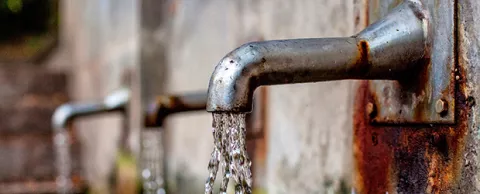
In an age where your smartphone can tell you exactly when you need to leave to arrive on time, for many people, the level of service they get from utilities can seem a bit ancient. After all, water utilities still occasionally surprise homeowners with bills that can reach into the tens of thousands of dollars. Shouldn’t there be a way to identify water leaks before the next billing cycle?
Some pioneering utilities and several Council partners are working together to modernize service. Read on for some ideas and best practices. — Kevin Ebi
The $57,000 water bill
Can you imagine opening your residential water bill and discovering that you owe $57,000? It happens when a water bill is the first sign of a leak. Itron and Microsoft — both are Council Lead Partners — worked with Lake County, Illinois, to eliminate surprises like that for utility customers.
In the past, the county water utility hired a third-party to manually check each customers’ meter. Problem is, they only were only able to check the meters seven months of the year. With such extended gaps between readings, it was possible for a leak to go undetected for two months — perhaps even longer.
Between smart meters that provide real-time data and an advanced analytics platform, the utility can now spot abnormalities almost immediately. Better yet, when an issue is identified, thanks to remote management capabilities, the utility can often resolve it with a simple phone call to the homeowner. They don’t always need to send a technician out.
Help citizens help you conserve
Aside from detecting leaks, the continuous flow of data can also give water customers valuable information to help them lower consumption. That’s especially important as water grows scarcer due to population growth or climate change — or both.
With all of the usage data feeding into a cloud-based platform, each water customer can set up their own alerts to help them better manage their usage. For instance, a customer could get set up automatic alerts to be sent if they have used more than 100 gallons of water in a month or if they have exceeded 85% of the water they used during the same period a year earlier.
Don’t neglect standards
It’s not just a matter of installing smart meters, however. It’s also critical for utilities to consider standards before implementing such programs.
First, some utilities have struggled to deploy smart meters when consumers rejected them, believing their wireless emissions trigger health issues. Council Lead Partner UL emphasizes that using certified meters can go a long way toward alleviating those concerns.
But it’s also about future proofing your infrastructure. While you may only want real-time consumption today, in the future, your smart cities vision may need those meters to interact with other parts of your network. Adhering to open communications standards helps you extend the return on your investment today.



